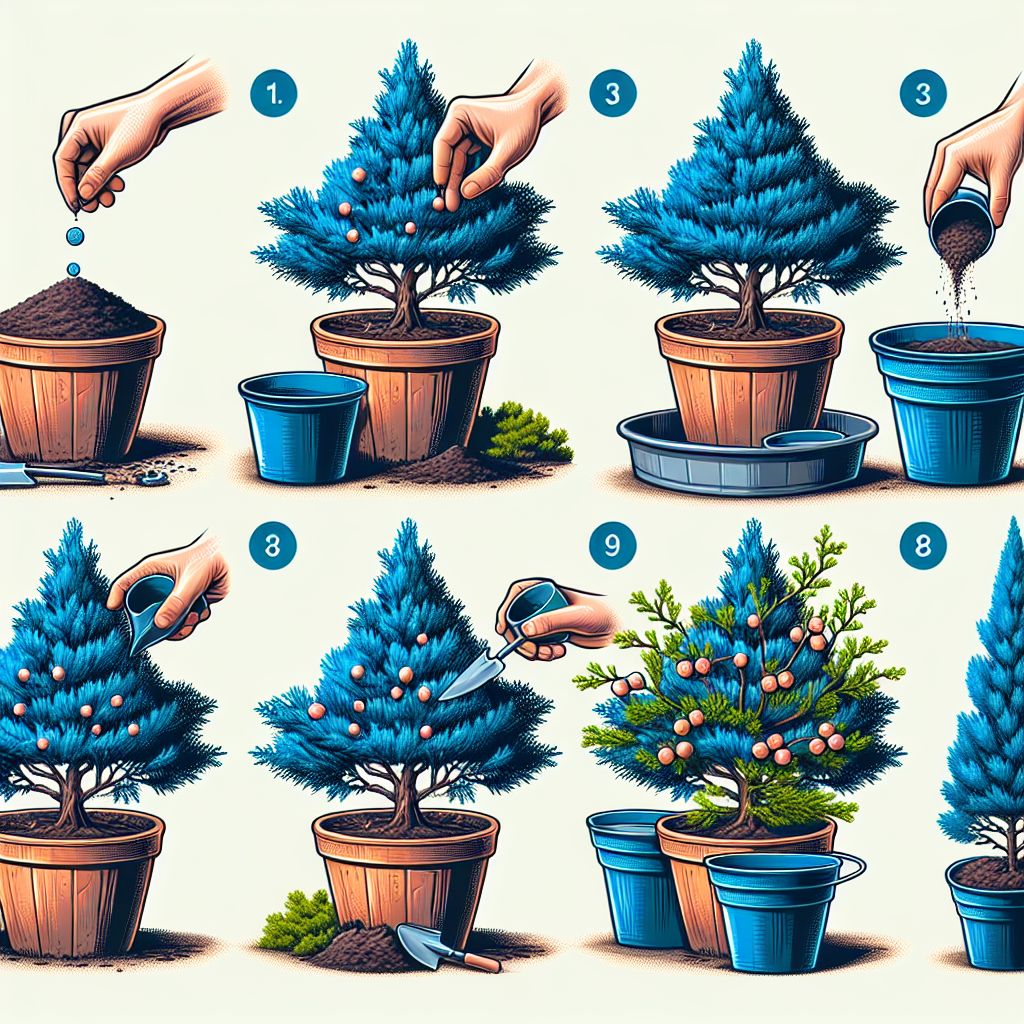Container Gardening 101: Growing Blue Point Juniper
Container gardening is a popular way to add greenery and beauty to small spaces such as patios, balconies, and porches. One plant that thrives in containers is the Blue Point Juniper. This evergreen shrub has beautiful blue-green foliage that adds a touch of elegance to any outdoor space. In this article, we will discuss how to successfully grow Blue Point Juniper in containers.
Blue Point Juniper plants are a variety of the Juniperus chinensis species. They are known for their pyramid shape and dense foliage, which makes them an excellent choice for container gardening. When planted in containers, Blue Point Junipers can be easily moved around to create different arrangements and landscapes.
To start growing Blue Point Juniper in containers, you will need a few key supplies. First, choose a container that is large enough to accommodate the root system of the plant. A pot with drainage holes is essential to prevent waterlogging, as junipers do not like standing water.
Next, select a high-quality potting mix that is well-draining and nutrient-rich. Blue Point Junipers prefer slightly acidic soil with good drainage. You can also add some slow-release fertilizer to the potting mix before planting your juniper.
When planting your Blue Point Juniper, make sure to loosen the roots gently before placing it in the container. Fill the pot with potting mix up to about an inch below the rim of the container and then water thoroughly to help settle the soil around the roots.
Blue Point Junipers thrive in full sun but can also tolerate partial shade. Place your container in a location where it will receive at least six hours of sunlight per day for best results. If you are planning on moving your juniper around, make sure you rotate it regularly so that all sides receive an equal amount of sunlight.
Watering is crucial when growing Blue Point Junipers in containers. Water your plant deeply once or twice a week during the growing season, depending on weather conditions and soil moisture level. Make sure not to overwater as this can lead to root rot and other issues. Allow the top inch of soil to dry out between watering sessions.
Fertilizing your Blue Point Juniper is also important for healthy growth. Apply a balanced slow-release fertilizer in early spring before new growth starts and again in late summer as needed. Avoid fertilizing during winter months when plants are dormant.
Pruning is another key aspect of caring for Blue Point Junipers in containers. Regularly trim back any dead or diseased branches with clean pruning shears to promote new growth and maintain a tidy appearance. You can also shape your juniper by selectively removing branches or shoots that disrupt its natural form.
Pests and diseases can sometimes affect Blue Point Junipers grown in containers. Keep an eye out for common pests such as spider mites, scale insects, and bagworms, which can be treated with insecticidal soap or horticultural oils if necessary. Prevent fungal diseases by avoiding overhead watering and ensuring good air circulation around your plant.
In colder climates, protect your Blue Point Juniper from harsh winter weather by wrapping the container with burlap or moving it into a sheltered location such as an unheated garage or shed until temperatures warm up again in spring.
With proper care and attention, your Blue Point Juniper should thrive in its container garden for years to come. Enjoy watching it grow and transform your outdoor space with its beautiful blue-green foliage and elegant form.
In conclusion, growing Blue Point Juniper in containers is a rewarding experience that allows you to enjoy this stunning evergreen shrub even in small outdoor spaces. With proper soil, sunlight, water, fertilizer, pruning, and pest control practices, you can successfully cultivate a healthy and vibrant juniper plant that adds beauty and joy to your surroundings.













